The Real Market With Chris Rising – Ep. 43 James Segil
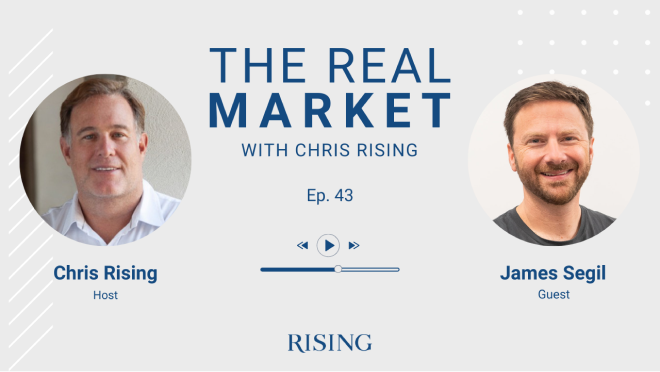
Chris Rising (00:49): Welcome to the Real Market with Chris Rising. I’m excited today to have James Segil, the president and co-founder of Openpath Security on the podcast. Openpath is a really incredible technology, especially given the world we’re living in. It’s about having a contactless entry into all of your commercial projects. James [inaudible 00:01:08] have a very good discussion about the challenges of being a hardware and software company, about the challenges that they face in having contactless entry and the risks. We talk a little bit about the future of where this is heading in a post-COVID world, people’s concerns and fears about touching services and how that surfaces and how that’s going to play out.
Chris Rising (01:28): It’s a really good conversation. I think you’ll enjoy it. James, welcome to the real market.
James Segil (01:32): Thanks, Chris. It’s great to be here.
Chris Rising (01:35): Well, we’ve had some good conversations over the last a week or so, and I’m really looking forward to this podcast, but why don’t you introduce our audience to Openpath?
James Segil (01:46): Sure. Openpath is the ability to use your phone [inaudible 00:01:52] have a key card or a badge to unlock the door at your office. We are an access control system and we’re installed anywhere you’ve seen an electronic door where basically you have a reader that reads a key card and an electrified door strike. We can go anywhere where you see electrified doors. We’ve entered the market basically about two years ago when we launched the company. The goal was to change the experience of how you interact with the built world. Before it’s always been about carrying keys or maybe remembering a pin code or carrying badges and fobs. We were frustrated users who, ourselves, were tired of carrying around lots and lots of badges for the various offices that we manage around the world at our various companies.
James Segil (02:40): And thought, this mobile phone that we have in our pocket is a supercomputer. It can do so many things. Why do I still have to carry keys? Why do I still have to carry cards? I should be able to unlock everything with my phone. We looked at the market and saw there’s a big opportunity where no one had really figured out how to do this with user experience in mind in a friction free way and saw that the underlying software as well that running systems was client server based. Basically, he was installed on a server under an IT clause under a security desk at someone’s building or office. We saw another opportunity to move all that to the cloud, and cloud and mobile having been such disruptive technologies, and almost every other industry had not really disrupted the real estate and prop tech, property technology world.
James Segil (03:27): We saw this as a big opportunity and we had a good wheelhouse of knowledge in this category, and so we jumped in feet first and it’s been a ton of fun growing and building this business. Chris Rising (03:38): That’s terrific. I think people get lost in their thinking about the difference between a fob and something that would be on your phone. But before we really dive into the hardware component, because at the end of the day, you are a software and hardware company. Tell us the difference or if there is any difference between the type of technology in an office building or maybe in a multifamily, but an office building and one, if you were to go stay at a Hyatt and they send you your key via the phone, is the technology fundamentally different or the issues that a hotel confronts is different than an office building?
James Segil (04:17): No, it’s a good point. It’s similar technology I think, when you think of commercial grade systems, systems that go into a commercial building, they tend to be of a caliber in terms of their reliability sort of quality. It’s a little bit different than you might find in residential, certainly multifamily and single family homes, and also that you might find even in hospitality. Think about a door that is in one of your buildings, the lobby door. That door has to open thousands of times, if not maybe tens of thousands of times a day and has to have many thousands of different people coming in and out. The ability for that door to handle that many unlocks and the volume of unlocks repeatedly to flow so many people through is pretty high.
James Segil (05:15): Whereas a hotel room door, maybe three times a day that door gets unlocked.the nature of those systems are … they’re typically battery powered, that sits on a hotel room door, they don’t necessarily have the kind of security and encryption that you would need for a building that has to safeguard a whole lot of people. The turnover on the entry is very low, but the turnover on the change in users is very high. The number of people who stay in a hotel room is probably one a day, a different person, and so the credential needs to be upgraded and changed constantly. If you’ve ever had this happen where you go to a hotel room and you have your hotel room key card and you held it too close to your phone and tried to get into your hotel room and it doesn’t work because it kind of got erased.
James Segil (06:09): That’s not an enterprise grade solution that you’re using for a hotel room. If your access card can get raised by being proximate to your phone in your pocket, that’s not something that you really want to depend on from a life safety perspective to get in and out of the building. There’s just different caliber of technology and solutions, but the underlying ability to use your phone to unlock a door is pretty similar the different antennas used on the phone and the different ways you communicate with the system, whether it’s over the internet, over Bluetooth, over NSC, over wifi, all those are a little different and everything has different puts and takes.
Chris Rising (06:43): Well, something that I always have trouble understanding is the fob has been around for a long time. People had cards they wrap around their neck and then we have the key fobs. But it’s only more recently that people are starting to say, why can’t we do this from our phones? What has been the hardware change, maybe it’s a software change, but I think it’s a hardware, that has made this possible even though fob has been around for 10 or 15, 20 years?
James Segil (07:12): Well, so the underlying technology in the fob is RFID and that’s been around, to your point, for gosh, 40 years. It’s not very secure, but it works and it’s reliable. Folks in this industry have just depended on what works and what’s reliable. The challenges you can clone and copy one of these fobs, your key cards, pretty easy because there’s no encryption and the data just pass openly between the device and the reader. If you look at the security requirements that have come to play in the last couple of years, you really don’t want to be able to have people hand around credentials, copy keycodes, copy cards. You want to have a level of encryption so that you know the right person who’s meant to get in is the one who’s getting in.
James Segil (07:56): Additionally, you’ve got the additional sort of development of Bluetooth technology, which has really moved things forward. Our phones all now use common radio frequencies and have antennas on that allow us to do a host of different things. Because there’s Bluetooth on the phone as well as wifi and LTE and a number of other technologies, you can now use the phone to connect to the device on the wall in a way that you really couldn’t before. Now, these smartphones are quite ubiquitous. Everyone has one. That has been a big change. Think about your car key. Most modern cars now have Bluetooth built into the key fob, so when you walk up to the car, the door just unlocks. You sit down in the car, you don’t even insert your key, just put the start button and go.
James Segil (08:43): That ubiquity in terms of Bluetooth being a part of our everyday interaction with technology is just where the world has gone. Then I think the access control systems now I to kind of play catch up.
Chris Rising (08:57): Well, I can think of about 10 great spy thriller movies and such where part of the whole plot is how they steal a keycard to get into something. With your technology, that’s all going to go away. Steve Bobs has been very quoted a lot and was very open about his statement that hardware is just tough. Whether you’re trying to do headphones, you’re trying to do peripherals for a computer, or if you’re trying to do things in a very dated and closed industry, like real estate. I’ve been a part of the real estate industry for most of my life, and it’s still the same names in a building, Johnson Controls, Otis Elevators. When you started thinking about this idea, were you cognizant of the fact that real estate changes slowly and then you add that hardware is really hard?
Chris Rising (09:53): Were those things that you thought about or were you more focused on the fact that this seemed like a no brainer idea that people would want it immediately and you learned a few hard lessons over the last couple of years. How did it play out for you?
James Segil (10:07): We looked at a number of different demand drivers and trends in the marketplace that got us excited about this business opportunity. I think that the first one was certainly the adoption of mobile, it’s now become sort of a standard use case for people to use their phones to do virtually everything. IoT, internet of things is ubiquitous, and everyone every day interacts with their phone and the built world around them. I think the trend also of the end users, the millennials and all the different generations of workers that we have in the office space and in the build space all have an expectation that they can use technology in a more advanced and interactive way, as they do in their home today with the growth and popularity of systems like Nest and Ring and Apple home and Alexa and all these different things people want them, to see and experience in the commercial world and it hadn’t really adapted to that trend.
James Segil (11:00): I think there’s also a general industry paradigm where, as entrepreneurs we looked at the access control industry and said, wow, this is an opportunity to disrupt because there’s so many inherent flaws in it. For instance, just an access control, this tiny little weird niche in the prop world space or built world space, there are companies who make just the readers that go on the walls and the credentials. There’s other companies who make just the panels, which is the circuit board that goes in the IT closet that connects all the wires together. Then there’s a whole other set of companies that make the access control software. All these various companies basically require a system integrator to come in and integrate all those different things together to make an access control system work.
James Segil (11:49): That’s the way the industry has been for 40 years. When we came and looked at that inefficiency and the fact that these different silos of companies weren’t working well together to move innovation ahead fast and were stuck in their old ways, we saw opportunity as a disruptor to come in and say, look, we’ll make the hardware, we’ll make the readers the panels, we’ll make the software, we’ll make the credentials, we’ll have to make all these different things, but if we do that, we can push out new features on a daily and weekly basis, instead of what these guys do, which is every couple of years they come up with something that’s a baby step forward.
James Segil (12:23): We’ve been able to completely change the user experience and the nature of the industry by making all the hardware and the software. Otherwise, to your point, I would never have wanted to make the hardware. Software is just a much easier and easier to scale business, but we had to in order to deliver the user experience that we wanted to.
Chris Rising (12:41): Well, since we’re sitting here at April 20th 2020, right in the middle of the pandemic and shelter from home and people thinking about well, when we get back, what’s an office going to be like? I don’t want to touch surfaces. Is your phone ringing off the hook right now? Are people like, oh, I really need to come up with some solution that isn’t a key where someone has to touch hardware or physical locks. What’s been the response given everything we’re dealing with right now?
James Segil (13:12): Yeah. You’re spot on. This is that moment in time where people are realizing they have to pivot and it’s not just because this is an amenity that improves the quality of a tenant’s experience or a worker’s experience or user’s experience. It’s about a necessity that there is a compliance standard that we’re going to have to adhere to where we need to manage occupancy in a physical space, we need to be able to change the schedules and the access privileges for different shifts of workers as they are time shifting, working from home, remote, working in smaller groups at the office to keep occupancy levels down. Then finally, people just don’t want to touch anything. Don’t want to touch a common surface. They don’t want to type in a code or put a key in or have to open a door with touching the handle.
James Segil (14:01): Our mobile credential on the phone allows them to, from their phone, unlock a door, and combined with an automatic door opener, allows the door to simply just open and they walk in and they can choose the elevator floor they want and they can open the door to their office. It allows them to touch very, very few things. To your point, this is something that people are now just realizing, wow, I have to reconfigure my built world, my workspace to get ready for people to now head back to work in this sort of social distancing occupancy sensitive world where we have to reduce the number of touch points, the common physical touch points. We have to keep occupancy managed very tightly and keep social distancing as part of our day-to-day where people are not forced to be close to one another based on the built environment that we’ve created, but instead they can actually separate and have ample space apart.
James Segil (14:56): We happen to have the right product, unfortunate circumstances, but it’s causing a lot of people to need to actually upgrade now faster than they would otherwise have.
Chris Rising (15:05): How have the big elevator companies been to work with? Over my career, they have been the most difficult to try to bring into the 21st century, and now we’re well into the 21st, 20 years into it. I’ve always found the Schindlers and the Otises difficult to deal with and not willing to have APIs open to people. How have you been able to work with them?
James Segil (15:33): I would mirror your experience with ours. It’s a very slow moving process to build out integration capabilities. I think there’s a lot of non invented here perspective that those folks have. I think there’s a growing awareness that they need to do more and an interest in doing more, but the pace at which they do that and open up is very, very slow. I think it’s just because they’re so well entrenched in their position and they’re in short supply in that, trying to get an appointment scheduled to actually get your elevator upgraded if you’re a building owner is actually really challenging. Trying to get on their radar to get a new system into new construction is doable, but if you have a building that has a legacy system and you want to actually upgrade it, unless it’s a really big building and a huge dollar amount, they’re not going to give you the time of day.
James Segil (16:29): I think that’s the challenge where the industry really needs a kick in the butt and they need to realize that, at least on the elevator side, an open platform and an open approach is going to win the day. We actually partnered with a company called [inaudible 00:16:43]. They make a middleware technology and they’ve spent years literally building integrations with all the legacy elevator systems. Through that technology, we’re actually able to connect to Otis, Schindler, Krupp, you name it, we can connect to them. So, we haven’t had to deal with a lot of the stress and tension associated with trying to manage and evolve a partnership without the elevator companies. We’re able to find a partner who deals with all that and then we were able to leverage that as a way to integrate. We can integrate with every single elevator out there. We just don’t have to deal with them directly.
Chris Rising (17:21): You have a tech background and you launched Openpath as a tech-focused company with hardware and software, but you were squarely in the world of prop tech, but really squarely in the world of real estate and dealing with construction people, building engineers who really don’t like change because it changes their life to have to change. How have you found, on the building owner side, those engineers and those construction managers, their receptivity to this technology? Is it open arms or have you had to make a lot of tough sales pitches?
James Segil (18:03): The tenant, at the end of the day, is the customer that they listen to, and tenant demand has been allowing us to succeed at a faster pace with landlords as tenants pull us into those conversations. A tenant moves into a new office. If they are a single tenant in the building, they can write the ticket in terms of what access control system gets put in. If it’s a multi-tenant building the tenant has to bring their own access control for their office suite. There’s often a discussion with the building, hey, we want to make sure these systems integrate. As we become more popular with the tenant community, the landlords have really started to listen, and I’ll give them this, that whole landlord, building owner, property management community definitely does keep its ear to the ground and they’re very responsive and reactive to tenants.
James Segil (18:55): You can speak to that certainly based on your own experience. Given that, we are starting to get increasing traction. It starts at a portfolio level, typically with us, where, Lincoln Property company is a great example. They’re a large property manager and portfolio owner who had decided, based on valuation their innovations team did, to standardize on Openpath across their entire portfolio. I think that’s something like 400 million square feet of office space globally. As we’ve built out relationships with different property owners, it’s become a lot easier once you win one to win the next and the next. I think the other thing that happens is there’s a hand to hand combat that happens at a property by property level. That often has to do with the nature of the asset.
James Segil (19:44): If a building needs to be repositioned and it needs a bit of an upgrade from a renovation perspective, often it’s an easy upgrade to put access control in. It costs less than many of the other things you might need to do to make that building a little bit more tenant friendly, where the amenities that people recognize are compelling and appealing. So, we’ve had a lot of traction there. I think now obviously it’s a whole different world where the property owners have moved past the hole. Well, do I have a capital budget for this? If I have to add an amenity, what’s the one I’m going to sort of spend money on?
James Segil (20:23): Now, it’s all about, okay, I have tenants who have left my building and I need them to come back, I need to alleviate their fears and concerns and put business practices and technology in place to make these buildings ready for a post-COVID world. I, myself needs to get them paying their rent again. What do I need to do? I need to invest in making sure this is a safe place to come to work and I want as much of their workforce to come back here and feel safe coming back as possible. I think it’s now table stakes, whereas before it was a nice tenant and entity. Now it’s just something people have to do. What’s your perspective since you’re right in there?
Chris Rising (21:03): Yeah. Well, my perspective is this is going to become building standard for most people. I think I mentioned to you that whenever I read about cutting, because we’re a little bit over budget on a few things. The partner said, well, let’s just cut at and see if tenants want it. Now, they’ve called back and said, we need to bring that back in. This is the new world we live in. You can see it from the equity side that there is a real concern about how we come back and compete. You’re probably not surprised there are still the engineers here and there and the construction people here and there. They’re like, well, what happens if there’s an earthquake? We physically have to lock things or unlock things. I just want to have a key. How do I answer that question to some of my engineers?
James Segil (21:51): Yeah, the good thing is today they have access control systems in place. Anywhere you have a building where you have an electric door strike and a card reader, you have an access control system. If that access control system power is down, you have backup power. If the backup power is off, you have a key. Based on fire code, you can egress any building, any time and it’s not a problem. We are simply an access control system. We just happened to be triggered from the internet and from a phone, as well as from a key card or a badge or a key. Access method agnostic is our mantra. You can use a key card, you can use a key, you can use a pin code, but most users are going to choose to use their phone.
James Segil (22:41): Now, instead of having just the local access on a computer in the IT closet, you can have internet access as well. We’ve just taken table stakes on what they used to be, the bare minimum of a computer that’s installed in the building to control the electronic locks on the doors and added an internet capability and a mobile capability to that without taking away any of the inherent features that are there. I think that’s the education that we want to have to the building and facilities manager, which is this is just additive. You’re future proofing the investment that you’re making in the system. We’re not taking anything away.
Chris Rising (23:18): How about just from a perspective of implementing? What’s the user, if you’re a tenant, you’re an employee at a company that has this, what kind of ramp up or what do they have to do? Is it simple as downloading an app and can that app then be moderated by HR? So, if somebody gets terminated, how does that employee experience manifest itself?
James Segil (23:44): Yeah, so it is as simple as installing any app that you’ve ever done, probably even easier. You go to the app store, either the Google store or the Apple store, you download the Openpath app. It’s now on your phone and when you open it, it says, ready to get started? Please type in your email address. Type in your email address, and you click go. In your work email, which is on your phone, you get an email that says, click here to activate your mobile app. You click there and it’s done. Your doors that you have access to show up instantly in the app and you’re good to go. You don’t need to do anything else. What’s cool about that is if you lose your phone, break your phone, want to upgrade your phone and you get a new phone, you don’t have to go run to HR or to the property manager to give you a new license to use on your new phone.
James Segil (24:34): You just do the exact same procedure on your new phone when you get it and it’s up and running and your email is running on it and you can just move the license over to your new phone and it instantly revokes the credential on your old phone. Then, it’s really up to the building as to whether they want to enable the tenants to have additional management oversight on those credentials. Let’s say the building has a system for their perimeter, the lobby, the elevators and the parking, and a tenant also has open path for their own office suite. What’s nice about that is, you can actually share zones between different entities or operators. You can have a single app experience for both the tenant and their office where they’re office is all over the US and the building without having to install a different app. They’re all sort of interoperable on same mobile experience.
Chris Rising (25:29): That’s pretty amazing. As you’ve been looking, experiencing what we all have with a shelter at home and some of the challenges we’re all facing in running our businesses during this period of time, how has your team … were you a team that had to be in the office to write code to get things done? What’s the work from home experience been? James Segil (25:53): We pivoted pretty quickly. About gosh, it’s been five weeks now or so, we moved everyone to remote. Luckily, we do a lot of knowledge work, so our folks are building technology, whether it’s developing new hardware or software, supporting customers or selling to those customers or supporting our channel. We can do that all remotely. We have a 3PL distribution center that ships our product for us. We have factories that make those and get final assemble and QA in different locations. We have just a subset of our staff working on the shipping and final QA assembly and manufacturing, and that is able to satisfy all of the various demand out there. We also pre-ship a lot of inventory out strategically to different partners and folks across the US so that we’re well positioned in case we have a supply chain disruption.
James Segil (26:51): I think working remote has worked out well for us. We also are pretty excited about the opportunity to get back to our offices. I will say that we all miss one another and that that comes up in our daily zooms and our standups often. I think we’re a company that feeds off of having a lot of smart people who are passionate about our mission together in the same physical space and we don’t get that as much when we’re working remote. Our headquarters are here in Los Angeles in Culver City. We have a team of 60 people here, and then we have an office in Indianapolis where we have a smaller team of five or six people, and then salespeople are all over. Our developers are our core marketing product operations team. All want to get back to the office as quick as we can so that we can all start to collaborate in person. We definitely do miss that. Chris Rising (27:42): I always like to ask people, especially in the tech side of things, what kind of infrastructure from a tech side did you have in place that allowed you to do this seamlessly? Whether it’s from email, is it Microsoft? Is it Google? Have you implemented any project management software? Obviously, everybody now is hipped to what Zoom is. I spent the last five years trying to get people to do Zoom meetings and nobody would ever show their face on it. Now I can’t get people to not want to show their face on it. What’s been some of your infrastructure that you have used that makes this a successful work from home environment for you?
James Segil (28:22): Yeah. Well, so our standard computer that we issued, every employee has a laptop and they can choose what high powered PC or Apple they want, and so that was easy because people could take that with them and they would work from home and work remote and had flex hours. We’ve always had flex hours with our employees so they can go as traffic mandates and personal life mandates. People were used to being able to work anywhere. Everything’s up on G-Suite and in terms of our collaboration and Google Drive, Google presentations, Excel, all that stuff. Then, our email runs off of that too. Then, we were able to leverage everything else that you talked about. Zoom has been sort of a standard for us. Slack is our communications tool of preference.
James Segil (29:10): So we Slack a lot and you can do group calls and group meetings on Slack as well. We do a lot of virtual selling so we do a ton of lead generation that comes back to an inside sales team that sells online. Not online, but sells over the web and educates customers as to our value prop and then hands those leads out to our channel partners who are the ones who go and walk a site, give a quote and then do the installation and actual transaction of the sale. I think that the hardest part through all of this has probably been our channel. We have hundreds of system integration, low-voltage electrician, locksmith and security, an alarm installers around the world and Canada who are struggling right now because of the shutdown. Even though they’re essential, I think they’re having a hard time because their business depends on them being able to roll a truck and go out there and install systems. Right now, things are not happening. Chris Rising (30:08): Yeah, that’s a tough one and it’s tough to find where they fit for some of the government programs. Certainly understand that. Let’s pivot the conversation a little bit towards, so you’ve been in the tech industry really, most of your professional career and you’ve had some exciting positions in the tech industry. Is there anything that, what you were doing at some of your other gigs that you can see now for the future that you’re like, wow, that this is where we’re headed, this is where the perk’s going? Anything you can draw from your experience about where we are here today?
James Segil (30:47): Well, so I started off my career straight out of college at Mattel Toys. I was actually a brand manager for Hot Wheels. That was probably one of the coolest jobs I’ve ever had and did that for five years, then went to business school, and then when I got out, tech was happening and I ended up jumping in and running a tech company. We went through the dotcom bubble burst, both pre and post and went through the 2008 crisis. We’ve been sort of through a number of different cycles and it’s been the same bunch of guys. We built a number of great companies over that timeframe. I’d say the things that have held true as we’ve gone through this whole process has been the pattern recognition that we have around when to say no and how to focus.
James Segil (31:34): My partner, Alex and I, have spent a lot of time saying no, and I think that is the key to our success so far, which is, it’s so easy to get dragged down, so many rat holes, chasing different projects and different customers and different ideas because this is an exciting world. There’s lots of things that you can do, but to say no, and to stay focused, and to have a clear vision, and to follow that vision and to see it through has been a key to how we’ve been successful so far. I see that presenting itself time and time again. Now, it doesn’t mean we don’t pivot when we need to, but it’s not the thing where you step away from the vision you initially had.
James Segil (32:19): You add to that vision and you say, look, I thought that I needed to be this way in order to succeed in this market. I’m hearing my customer’s feedback that says I need to tune that thesis and sort of move a little bit to the left or a little bit to the right and we’re able to do those kind of moves. But we tend to try to really focus and sort of say, if we have vision and we’re committed to it, let’s go make that happen. I think that’s one of the things consistently I’ve seen play out.
Chris Rising (32:44): That’s really good advice. It makes a lot of sense. I would imagine that after five or six weeks of people living at home and getting certain things, whether it’s food delivery or Amazon deliveries and things like that, I have to imagine when people go back to the office, they’re going to say, “I don’t really want my office life to be that much different than my home life.” Are there opportunities and things that you think about that? I guess the biggest one is I think people would really just don’t want to touch things, but I’m just curious if you’ve thought a lot about how one’s personal life is going to mix in four or five weeks with one’s business life in their interaction with physical objects and such.
James Segil (33:31): That’s a good question. Gosh, I think of so many things that come out of that question. One is the idea of privacy. Post 9/11 when we all got really worried about bad things that could happen, we gave up certain privacy rights and accepted a certain amount of friction in everything we did, whether it’s getting on a plane and going through more security or getting into a tall building and going through 15 minutes of visitor guards and checking in and all that. Then I think post Columbine, we probably had an overreaction there. Oh, not overreaction. It’s just a new normal where an active shootout can happen anytime and anywhere, and we had to accept that and change how we dealt with lockdown drills and training ourselves to respond and react in different environments to what could happen.
James Segil (34:25): I think now post-COVID in a world where a pandemic is not just a concept, but a reality, we also have to know that there’s a new normal, that is how we’re going to interact with the world around us. That means that we have to be prepared to take care of our kids and homeschool them if need be. We have to be prepared to work remotely and to move around and shift where we work and how we collaborate, and have to be prepared to give up a certain amount of privacy that we once held very dear so that we can better protect one another. The big conversation now is about contact tracing and all the people who will identify or self-identified as having been vaccinated or having antibodies and how they interact with one another or don’t, for that matter, to flatten the curve and keep it flat.
James Segil (35:18): I think that the privacy sort of friction or compromise that we’re going to make personally and professionally around sharing our health data will be an interesting evolution. I think the ability to have greater flexibility and how we move around and go to work or work remote frankly, at home, and the willingness of employers to let people be flexible, to accommodate life to schools health and all that I think has changed and will fundamentally change from now on. Overall, I think people’s sort of pendulum swing back and forth over the next year and a half or two years until we’re fully hard immune will be interesting to watch as we are all frustrated at being cooped up in the house for a while, and then we’ll move to get back out there as quick as we can.
James Segil (36:10): Then, as people start to come into contact with one another and get sick and the curve is no longer flattened, we all start to head back and lock ourselves down for a while, and then again, we go back and forth and back and forth until such point as we are truly hard immune. I think that’s going to be the nature of our lifestyle and the compromises we make for the next 18 to 24 months. I think a lot of what we just talked about will evolve and we’ll respond and react accordingly.
Chris Rising (36:40): Well, let me ask you this. Who owns the data of people coming and going and knowing who they are within your product? Is it the building owner? Is it yourself? Is it the employer? Because at the end of the day, when we talk about contact tracing, we’re going to want to use every piece of data we can. I would imagine the data coming from Openpath would be very relevant to people trying to trace.
James Segil (37:03): Yeah, it is. Contact tracing will always be an opt-in kind of system, right? Where to the degree that you are going to let anyone know that you are sick or you are immune or you have any kind of quality about you that you want known as part of your contact so it can be traced. That will always have to be and should be opt-in. Once however, you make a certain set of information about yourself out there and aware and that you share it and you desire it to be shared, then finding the best and most efficient way to communicate and inter-communicate with different applications and technology, to do that is where we kick in. For instance, today, you go to work and you get into your parking lot and you swipe your card to get in because you want to park and you don’t want to pay.
James Segil (37:58): You’re okay with the parking gate knowing that you’re coming in, and then when you walk into your building and the door’s locked, you swipe your card so that you can get in. When you get in the elevator, you do it, when you get to your office door, you do it, and why? Because you like getting paid. You like going to work and having a salary. If you don’t go to work, you don’t get paid. You want your building to know that you’re there. You want your office to know that you’re there, you want your employee to know that you’re there, and vice versa when you leave. You want to be able to get out of the parking lot and you know you don’t want to have to pay to get out because it’s pretty expensive to pay parking for a full day if you forgot your badge. So you badge out.
James Segil (38:35): There’s certain decisions that you make every single day where you let the building, you let your employer, you let somebody know where you are and you self-identify, and that’s perfectly fine, and we make those decisions all day long. Now, it’s a different animal, it’s a different when you’re saying, “Oh, by the way, I am sick with a disease and I’m going to tell everyone around me I’m sick,” or “I am immune to the disease. I’m going to tell everyone around me I’m immune.” That’s a very different kind of thing. If you look at the contact tracing analysis that actually are my chief security officers, Samy Kamkar did, it’s on our website. It’s on openpath.com on our blog. You can kind of see, he wrote a really interesting summary of Apple and Google’s latest contact tracing technology and how it’s very well done.
James Segil (39:22): It’s opt-in and it really allows you to know if you’ve been around anyone who is either sick or has reported as sick and within a different space and location without telling you who it is, but it’s like a way to know I’ve been exposed and I can choose to do with that information what I want. It allows a building to know if there’s been some level of exposure as well. I think that’s the most you can do. You can’t name names and you can’t sort of say, “Hey, Bob is the one who was sick and Bob got everybody’s sick.”
Chris Rising (39:59): Interesting. Well, I think we’re going to deal with a lot of these questions in a big way. You also wonder where does the governments start or stop? Does it become such a big deal that we’re forced, like they are in China? Can we do it? Can we control pandemics with people opting in? I think there’s also going to be a lot of value. I would imagine that when you look at the Openpath technology, which is security and opening and closing locks for doors, there’s also got to be some sort of piece of your technology that could also follow people as they go around. I’m not saying use that, but we all have location GPS in our phones. Where does the role for … how anticipatory can your technology be? Can it be when I get out of my car, the office door is already opened and then you’re starting to get into this location piece that I think the pandemic’s going to force people to maybe give up a little bit of their freedom around all this. I don’t know, that’s a little bit off topic, but something I think about.
James Segil (41:10): Well, there’s a balance that everyone has to choose between convenience and security, between ease of access and well-being and privacy. I think that’s a delicate balance. What we try to do is we try to put the tools and the technology in place to allow the built world around us to respond to whatever happens. Whether you want to be ready for the next pandemic or ready for the next security challenge or ready for the next bad actor who wants to try to steal your identity, we try to future proof the built space so that we can respond and react, and having all of the technology that we deploy be connected to the internet so we can push new capabilities and software down real time. Having it connected to your phone so that it can relate and respond to you based on proximity awareness or other requirements is I think really valuable.
James Segil (42:11): Then, we’ll adapt as the different needs present themselves. For me, that’s the core. There’s all this talk about smart buildings and how we need to be in a building that is more interactive and it’s about wellness and how it responds to you when you come in. I think that that was all done from the perspective of, hey, I want to lead a cleaner and healthier and easy life before. I think now, it’s just a lot more real for people where like, actually, yeah, I really want to live a cleaner and healthier life. I don’t want to get sick. People can really relate to that need now, more so than they could hypothetically a few months ago. Chris Rising (42:51): Do you think that people are going to push to get back to the office and eventually, once we feel safe, do you think, is my lifelong chosen profession? Is it gone? Do you think offices will have a place, it matters for your business and it matters for my business, but what do you think?
James Segil (43:08): I think people want to come together and need to come together in order to work, and there’s so many different kinds of businesses that are out there that require people to be together. It’s just the nature of how we all interact as humans. I think there will always be a need for office space, for lab space, for different kinds of people to come together and work. I think the nature of how we use it is definitely going to shift as a result of what we’ve just seen. There will be more remote work. I think remote work will be a more accepted way for people to interact. I think maybe you might see that some of the urban centralization of office space that we’ve seen in such demand might shift to a balance between more sort of suburban private office build out in a less expensive commercial real estate for teams that need to be in the office around one another all the time.
James Segil (44:06): Maybe the urban space becomes more meeting for infrequent meetings where everybody has to get together and socialize and interact, or maybe that becomes more satellite and the space that … further away where you can build out better separate private space might be the way it goes. But who knows? It also depends on the nature of the company and how things evolve over the next couple of years.
Chris Rising (44:32): Yeah. It might also have something to do with everyone’s work at home experience. Let me ask you this, tell our audience a little bit about your family and the challenges that you all have dealt with in work from home.
James Segil (44:47): Oh, gosh. This morning was one. I’m on a conference call right before this and I really was excited to speak to the gentleman I spoke to. I actually had a call with him about four weeks ago. They got canceled in the last minute because, unfortunately, we had a death in the family. That morning somebody passed away, and I was like, oh, I got to cancel this call. Then here I am today, finally back on the call with him or halfway through the call, and I hear screaming coming from the other room. One of my family members had fallen, broken an arm. And I’m like, oh my God. This is the nature of being at home and dealing with the craziness. Now, on one hand, I’m so glad I was here and an emergency happened and I was able to deal with it right away, but at the same time, it interrupted the middle of a business day and an important meeting I was trying to have.
James Segil (45:39): I have four boys at home. My wife is a pediatrician. She’s basically not practicing right now, so she can help homeschool two of my youngest, the two eight year old boys. Others are busy working through their curriculum. It’s challenging. We’re very lucky and very blessed that we have the resources we do to sort of get through, but I think I have a new appreciation for what it takes to both run the household, to educate my children and to balance that all. I have so much respect for the teachers and the schools that they go to every day because what we’re dealing with right now is not something I would ever have signed up for. I have respect for people who choose to homeschool their kids.
James Segil (46:24): I don’t know. I feel like this is a time that we will look back on as a family, as a community and as a company and say, wow, as tough as it was, we got so many amazing experiences out of it, being that close together and having family dinner every night and being able to relate to one another. I’m trying to look for the good in this experience and take something away that I will look back on with fondness, rather than the business challenges that people are facing and the unfortunate unemployment and sickness that’s going on right now that we’re all trying to balance or counterbalance against.
Chris Rising (47:02): Yeah. Well, it’s certainly interesting times. It’s so sad the deaths that have happened. I do think that, similar to the great depression, I think there’s going to be incredible innovation that comes out of this. I think products like yours that solve really serious issues for people in terms of fear by not having to touch things, I think it’s going to be really transformative. I really appreciate James, you taking the time to talk about Openpath and things you’re working on, a little about your family and your thoughts on the future. I really appreciate you being on the real market.
James Segil (47:39): Oh, it’s my pleasure, Chris. Thanks for putting this together. I look forward to being part of your built world experience as we partner together on all kinds of hands free access at your portfolio. Chris Rising (47:50): I appreciate it. Hey, before we get off, you’ve been doing a great webinar the last couple of weeks. You want to tell the audience a little bit about it, maybe get a little more exposure to it, what you’ve been doing?
James Segil (48:01): Sure. Over the last couple of weeks, so I really tried to get a bunch of different thought leaders together and help outline what the framework we could use to evaluate the new world order was. I did a bunch of webinars on CBRE on how to pivot to remote work. Now I’ve been doing a bunch of webinars with CRE tech, and Michael Beckerman, on what the new normal is. So, we’ve put together a framework for how to evaluate the next kind of four stages of post-COVID work world and built world. You can look at all this at openpath.com/webinars.
James Segil (48:39): There’s a history of all the webinars there. Our next one is going to be this Friday at 11:00 AM Pacific, and we’re going to talk about specific technology solutions that can get deployed today in the built space around thermal imaging, occupancy management, hands-free access control, automatic door openers, tenant amenities software, visitor management, all these technologies that can have a way to help your building right now respond to this kind of get back to work effort in a post-COVID world. Then we’ll have ongoing one of these every weekend. I hope to have Chris on as well to talk a little bit about what they’re doing at Rising.
Chris Rising (49:16): Well, thanks, James. I really enjoyed that conversation and found it very interesting. It’s amazing the world we’re going to go into in the next couple of weeks when we get back out into the world. I think Openpath will be really important for a contactless entry. You can follow James and his team at Openpath on Twitter @OpenpathSec. I’d love for you to follow us on Twitter as well @ChrisRising, and then of course the podcast platforms, please subscribe. It’d really be great if you subscribe to The Real Market with Chris Rising. You can do it on Apple, you can do it on Google or in the other podcast platforms. Thanks so much.

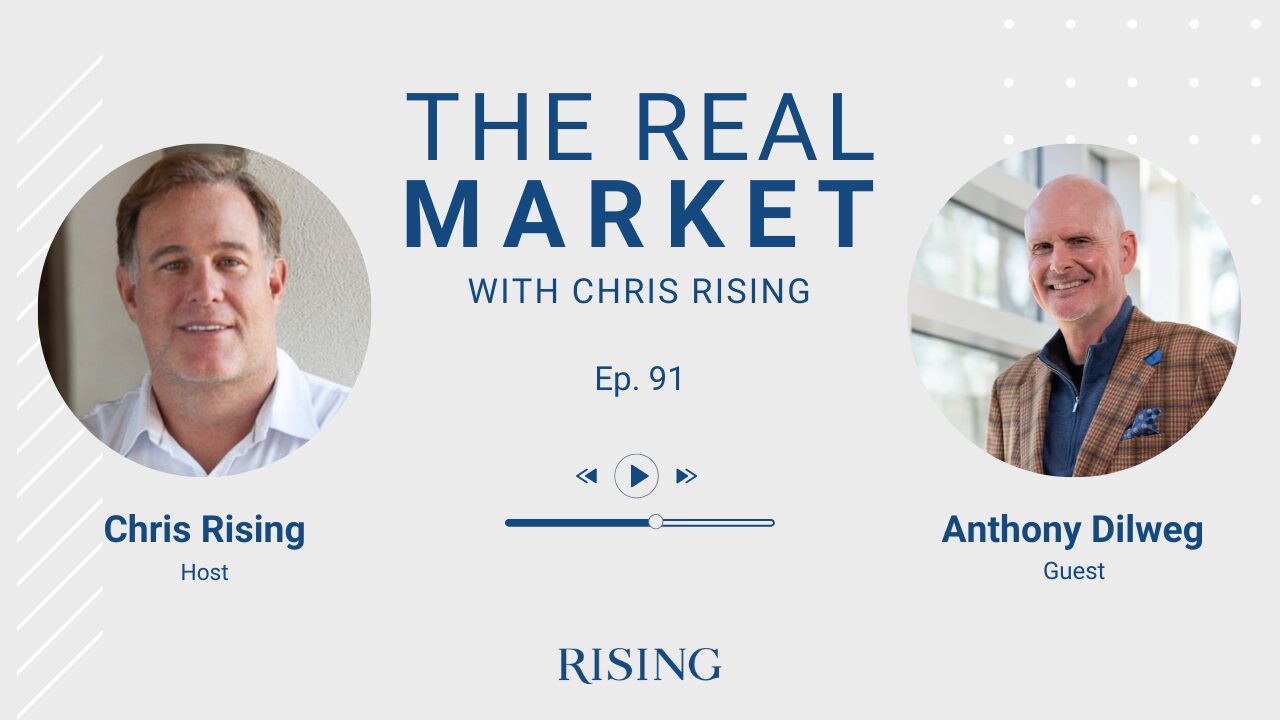
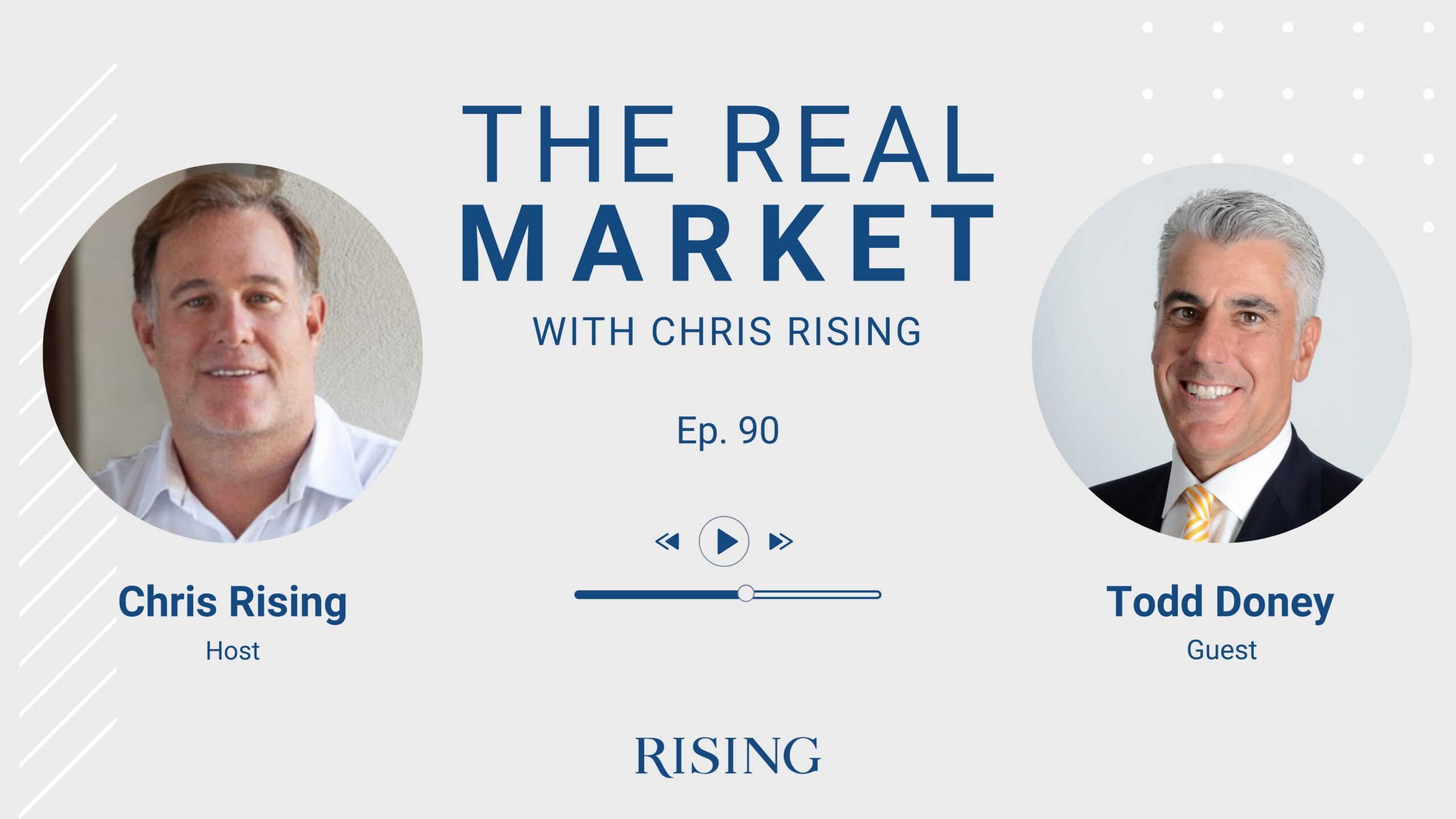
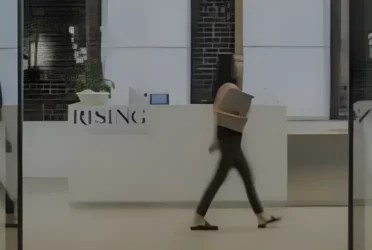 Our Company
Our Company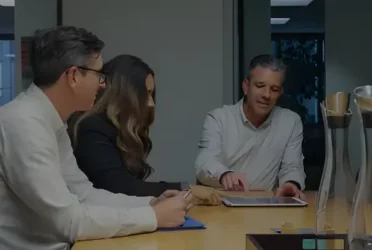 Our Team
Our Team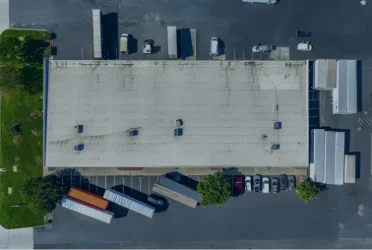 Portfolio
Portfolio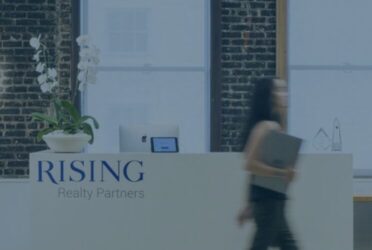
 News
News Insights
Insights Videos
Videos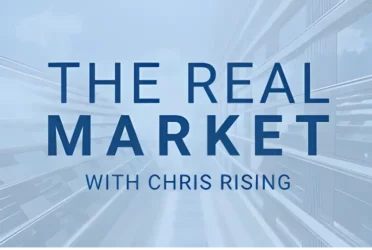 Podcast
Podcast